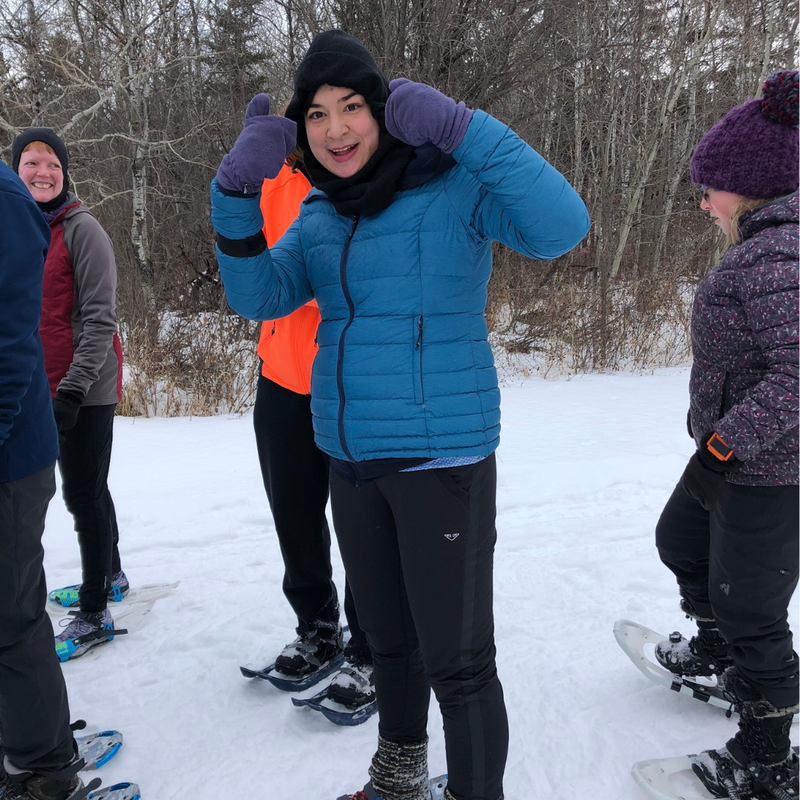By Sarah Spisak
Kathy Tauber’s excitement when her daughter was born was overcast with questions about what life would be like for her newborn baby.
“The doctor didn’t paint a good picture of what the future held when Megan was born.”
This is a familiar scene for parents who have children born with disabilities. Your hopes and dreams for your child, even if for a moment, are forever changed when they’re diagnosed.
“She was deprived of oxygen during the birthing process and started having uncontrollable seizures,” Kathy recalls. “She spent 10 days in the U of A Neonatal unit where they were able to control the seizures with meds, but the doctor explained that the area of the brain that was damaged could mean that Meg may never learn to walk, run, or speak, as it may affect her eyes and hearing.”
“Call it mother's intuition, but I knew she was going to be capable of great things.”
Although Kathy understood what the doctor was saying, she didn’t believe the limitations being put on her daughter. Through tears she listened to the doctor’s suggestions and took her newborn home, knowing that Megan would become more than the doctors ever imagined she could.
The doctors didn’t see Megan the way Kathy did.
At her 6-month follow-up, the doctor came in and Megan was sitting up.
“The doctor left the room and came back in and said what the chart says and what Meg is doing doesn’t match. There’s no way she should be able to sit up like this,” Kathy says.
“Call it mother's intuition, but I knew she was going to be capable of great things.”
Kathy knew about Special Olympics Alberta from volunteering with us when she was in high school in the late 1980s, but she didn’t know back then that Special Olympics Alberta would become an integral part of her life in the future.
When Megan was 12, Kathy signed her up for swimming with Special Olympics. Seeing Megan thrive and have fun while swimming ignited the volunteer bug in Kathy, and she has been volunteering and coaching ever since.
“I wasn't sure if we were going to stick around because of the age gap amongst the athletes. The closest one to her age was eight years older, but that took two practices to realize we were in the right place and the athletes welcomed her and there were no barriers.” Kathy says.
Since then, Megan has gone on to do track and field, indoor soccer, and in the winter, snowshoeing.
The snowy field in Rundle Park is where Kathy and Megan go once a week during the cold Alberta winters to meet up with fellow coaches and athletes to train for local competitions. Athletes of all ages and abilities gather in the parking lot, helping each other get prepared for snowshoeing.
One of the athletes is from northern Canada and grew up using traditional snowshoes. Kathy fondly remembers when he first saw the modern snowshoes they use in Special Olympics and how different they were compared to what he was used to.
Megan also had to get used to using the snowshoes.


“We decided to do snowshoeing because it went along nicely with track and field and gave her something extra to do in the winter. The first time she went out snowshoeing was a bit awkward, but much to my surprise, she picked it up quickly,” Kathy says.
Megan loves snowshoeing not only because it allows her to be active and healthy in the winter, but also allows her to socialize with her friends.
“She likes seeing her friends and coaches and getting her steps in, but I believe it’s the hot chocolate that we have when we get home that’s her favourite part of snowshoeing,” Kathy laughs.
Kathy describes Megan as one of the happiest people you will meet with amazing energy, and its evident when you see the large smile across her face as she participates in sports and socializes with her friends.
“I hope that Meg continues to have the resilience to always be open to trying new things and to continue bringing joy to people just by being her true self,” Kathy says. “She’s a very caring and loving person with a smile that shines.
“Wherever she goes the path will be bright.”